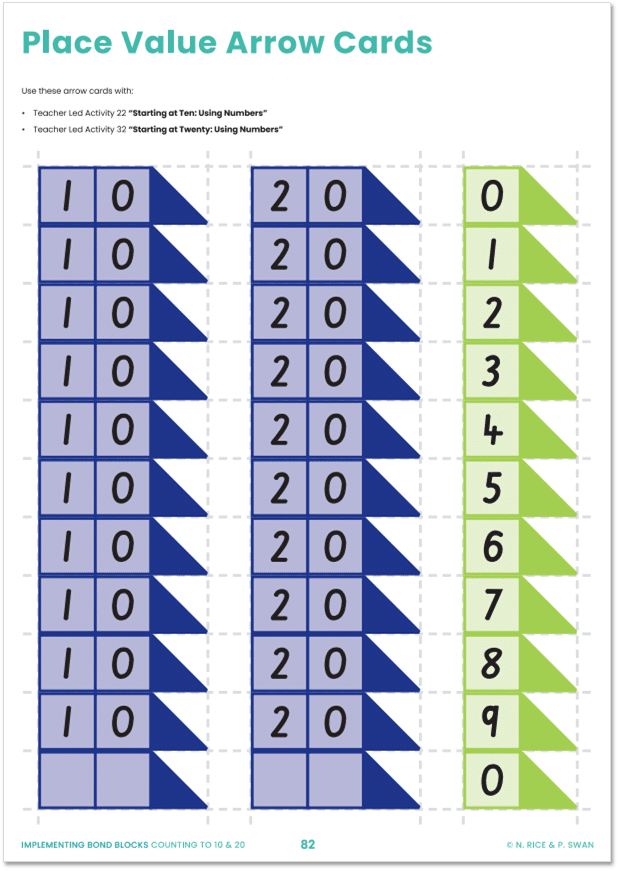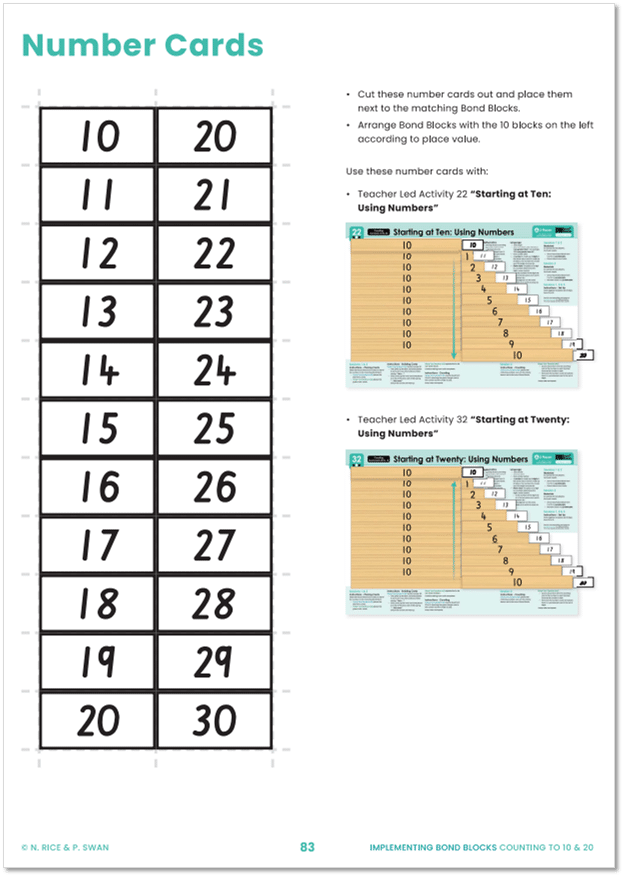32) Starting at Twenty: Using Numbers
Counting Backwards from 20

Understanding Activity
This is an ‘understanding’ (proficiency strand) activity.
Please refer to the instructions in the appropriate Implementation Planner for your context.
Mathematics
- Develop fluency counting backwards in the correct order from 20 to 10.
- Identify numbers from 11 to 19 as a two-part bond made of 10 plus a single-digit number.
- Connect the length of the Bond Blocks, number name and numeral.
Language
- One shorter.
- One less than.
- One number before.
- A number is made up of digits in the same way a word is made up of letters. The number 16 is made up of the digits one and six.
Place value: The place of a digit in a number determines the digit’s value (worth). - In the number 16 the digit one is in the tens place so is worth one ten, ten.
- The digit six is in the ones place so is worth six ones, six.

Differentiation
A little easier
Implementation Option B
Many students benefit doing this week over five sessions, instead of three. This plan is listed above under the heading “Implementation Option B”.
This is the video for Tuesday. Watch it after the Session 1 video, before the Session 2 video.
See the Board 1 from the A Little Easier chapter.
A little harder
Write the Number
Player One builds the number using the arrow cards, saying “tens, then one”.
Player Two writes and says the number.
AAA
P
AAA
P


